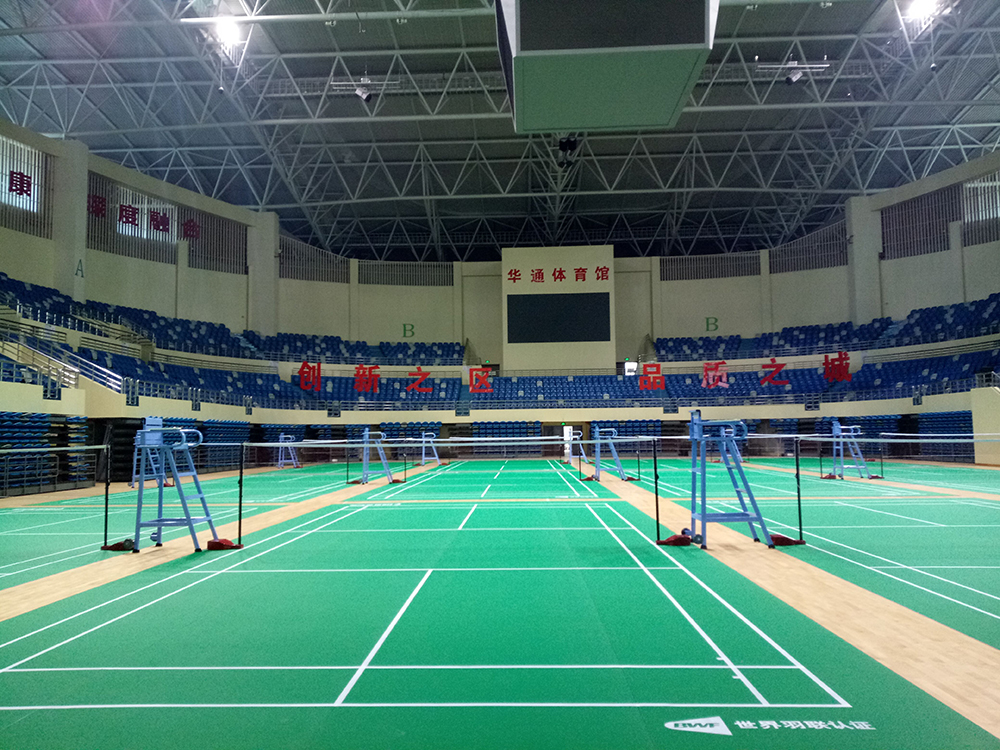Nov . 13, 2024 13:28 Back to list
indoor sports flooring
The Importance of Indoor Sports Flooring
Indoor sports facilities play a crucial role in enhancing athletic performance and promoting an active lifestyle. A key component of these facilities is the flooring, which significantly impacts various activities, from basketball and volleyball to gymnastics and dance. Selecting the right type of indoor sports flooring is essential for safety, performance, and long-term durability.
One of the primary concerns when choosing indoor sports flooring is safety. Athletes are susceptible to injuries, and the right flooring can minimize the risk. Materials such as hardwood, rubber, and synthetic surfaces are designed to provide appropriate levels of grip and cushioning. For instance, hardwood flooring is a popular choice for basketball and volleyball courts because it offers excellent shock absorption and biomechanical support. On the other hand, rubber flooring is often used in gyms and fitness centers, as it provides a non-slip surface and impressive durability, making it suitable for both high-impact and low-impact activities.
Performance is another critical aspect influenced by flooring choice. Different sports require different traction levels and surface hardness. For example, a hardwood surface allows for quick movements and changes in direction, essential for basketball players. Conversely, sports like gymnastics benefit from a softer, more flexible surface that absorbs impact and allows for safe landings. Selecting the wrong type of flooring can hinder performance and adversely affect athletes’ training and competition outcomes.
indoor sports flooring

Durability is also a significant consideration. Indoor sports flooring is subjected to intense physical activity, foot traffic, and various weather conditions (if facilities are not climate-controlled). Flooring materials must withstand such wear and tear while maintaining their appearance and functionality over time. Hardwood surfaces, when properly maintained, can last for decades, whereas synthetic options may offer better resistance to scuffs and stains but can require periodic replacement. Understanding the facility’s usage patterns is vital in selecting a flooring material that balances performance and longevity.
Moreover, maintenance requirements can vary widely among flooring types. Hardwood floors may require regular refinishing to maintain their sheen and protect them from moisture. In contrast, rubber and synthetic materials are typically easier to clean and maintain, requiring only routine sweeping and occasional mopping. Facility managers must consider the time, effort, and cost involved in maintaining the flooring as they make their choice.
In recent years, eco-friendly options have gained popularity in sports flooring. Many manufacturers are now producing sustainable flooring options made from recycled materials or sustainably sourced wood. These choices not only help reduce the environmental impact but can also appeal to athletes and organizations that prioritize sustainability in their operations.
In conclusion, the selection of indoor sports flooring is a vital aspect of any athletic facility. With safety, performance, durability, maintenance, and sustainability all playing important roles in this decision, facility managers must carefully evaluate their options. Investing in high-quality, appropriate flooring can elevate the overall experience for athletes and enthusiasts alike, fostering an environment conducive to physical activity and performance excellence. Whether it’s hardwood, rubber, or a synthetic surface, the right indoor sports flooring is key to supporting athletes and promoting a culture of health and fitness.
-
Premium Vinyl Wood Flooring - Durable & Stylish Tiles
NewsAug.10,2025
-
Premium Running Tracks: Gym, Oval & Custom Sizes Available
NewsAug.09,2025
-
Premium PVC Sports Floor: Durable & Safe Indoor Sports Flooring
NewsAug.08,2025
-
Durable Wood Flooring & Maple | Gym & PVC Vinyl Solutions
NewsAug.07,2025
-
Durable Vinyl Wood Flooring | Best for Home & Sports
NewsAug.06,2025
-
Enlio PFP Sports Court Flooring: Durable & Safe Performance
NewsAug.05,2025

